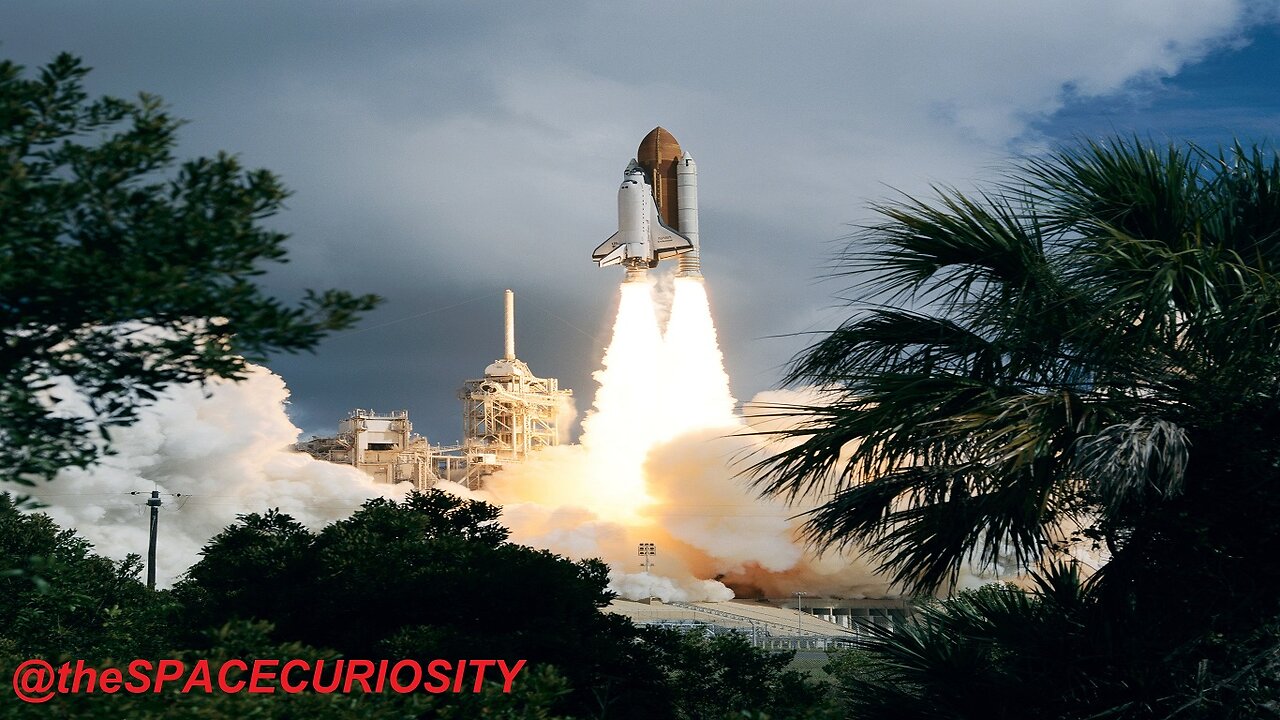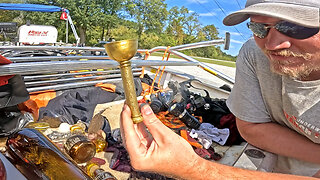Premium Only Content

Spaceship Rocket Launch
DO FOLLOW FOR MORE
A spaceship rocket launch is a highly complex and thrilling event that involves the ignition and ascent of a spacecraft propelled by powerful rocket engines. This process typically follows a series of carefully orchestrated steps, and here's a description of what happens during a typical spaceship rocket launch:
Countdown: The launch sequence begins with a countdown, often starting at T-10 minutes or earlier. During this time, various systems are checked and prepared for launch. The countdown is a critical phase, and any issues discovered may lead to a hold or even a scrubbed launch.
Ignition: At T-0 seconds, the rocket's engines are ignited. This ignition generates an enormous amount of thrust, lifting the spaceship off the launch pad. The ignition phase is marked by intense flames and a deafening roar as the engines come to life.
Liftoff: As the rocket's engines fire, the spaceship starts its ascent, gradually leaving the launch pad. The initial moments of liftoff are among the most awe-inspiring as the rocket overcomes Earth's gravitational pull.
Gravity Turn: Shortly after liftoff, the rocket begins a gradual turn to change its trajectory. This maneuver is necessary to achieve the desired orbit or destination. The rocket's guidance and control systems manage this process.
Staging: Most rockets are designed with multiple stages, each containing its own set of engines and fuel. As a stage depletes its fuel, it is jettisoned, and the next stage ignites. This process is called staging and is often accompanied by a noticeable jolt or shake.
Max Q: The rocket experiences its maximum dynamic pressure, or "Max Q," a few minutes into the launch. This is a critical point in the ascent, and the rocket's structure must be designed to withstand the forces exerted by the atmosphere.
Space Entry: As the rocket continues to ascend, it eventually reaches the boundary of space, known as the Kármán line, which is approximately 100 kilometers (62 miles) above Earth's surface. The spaceship enters space, and its passengers or payload experience weightlessness.
Orbital Insertion or Trajectory Adjustment: Depending on the mission objectives, the rocket may perform orbital insertion maneuvers to achieve its intended orbit. If the goal is to reach a specific destination in space, trajectory adjustments may be made during the launch phase.
Payload Deployment: Once the desired orbit or trajectory is achieved, the spacecraft may deploy its payload. This could include satellites, scientific instruments, or crewed spacecraft heading to the International Space Station (ISS).
Mission Operations: After achieving its primary mission objectives, the spaceship continues with its mission, which could involve scientific experiments, communication tasks, or other activities in space.
Reentry and Landing (for crewed missions): For crewed missions, the spaceship will eventually reenter Earth's atmosphere and return to the surface. This phase involves controlled descent, reentry heat shielding, and, in the case of human missions, a safe landing.
Overall, a spaceship rocket launch is a testament to human engineering and teamwork, involving precise planning and execution to transport payloads, conduct scientific research, or explore the cosmos. The experience is a breathtaking display of power and technology, making it a defining moment in space exploration.
-
 2:29:05
2:29:05
DLDAfterDark
6 hours ago $4.58 earnedWhat Are The Best Tools For Personal, Home, and Vehicle Defense? After Hours Armory
27.6K4 -
 2:58
2:58
From Zero → Viral with AI
1 day ago $1.59 earnedAI Isn’t Ruining Politics — It’s Revealing the Truth.
18.6K6 -
 5:21:08
5:21:08
MattMorseTV
7 hours ago $65.20 earned🔴Portland Antifa's LASER ATTACK.🔴
116K71 -
 2:57:37
2:57:37
megimu32
6 hours agoOFF THE SUBJECT: SAVAGE SATURDAY | Bodycam Chaos & Fortnite Madness!
34.4K7 -
 3:37:17
3:37:17
Mally_Mouse
1 day ago🌶️ 🥵Spicy BITE Saturday!! 🥵🌶️- Let's Play: Content Warning
39.9K3 -
 18:17
18:17
JohnXSantos
1 day ago $0.23 earned$1 vs $1,000,000,000 Business!
10.4K -
 3:11
3:11
Memology 101
22 hours ago $4.25 earnedDon Lemon DESTROYED by LEGAL immigrants after claiming crossing the border illegally ISN'T a crime
20.6K38 -
 1:32:31
1:32:31
BooniesHQ
12 hours ago $14.93 earnedGame Of SKATE Jereme Rogers Vs. Jordan Maxham: Boonies Skate Night 3
127K16 -
 15:23
15:23
Exploring With Nug
18 hours ago $6.07 earnedWe Went Scuba Diving in the River and Found Incredible Lost Relics!
32.1K2 -
 6:48:07
6:48:07
Rallied
13 hours ago $14.80 earnedBATTLEFIELD 6 DOMINATION WITH RAL !BF6 #BF6 #Ad
115K8